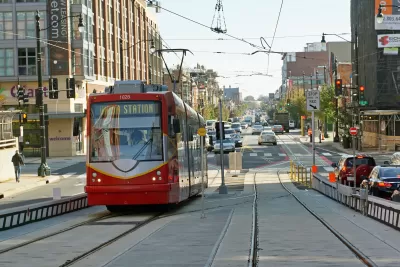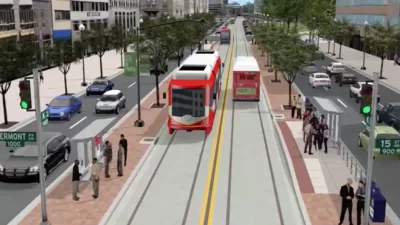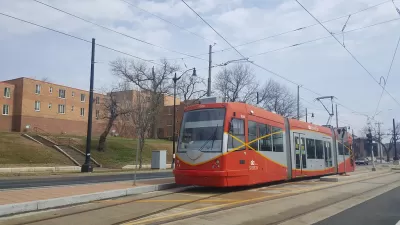Washington D.C.'s new streetcar line opened to a chorus of media naysayers who mocked the slow moving transit, but reality shows it's not quite as slow as some would have you believe.

It's not breaking any land speed records, but that was never the point. In a post on Greater Greater Washington, Ben Bowman writes that the media pile-on during the opening of the new D.C. streetcar line mischaracterized the speed and purpose of the new transit line. Bowman points to an article in the Washington Post that claimed that one could walk faster than the streetcar could travel, end-to-end along its route. This in fact may have been true during the opening, however speeds have appeared to pick up as regular service has begun.
As for the streetcar's speed, more recent articles say it's taking an average of 18-20 minutes to get from end to end. In fact, in the inaugural "Running of the Streetcar", many runners couldn't outpace the Streetcar, even when starting with a small lead...
The fact of the matter is that people have underestimated how much time it would take to walk the streetcar route, and overstated how much time it takes the streetcar itself to travel it. Really, taking the DC Streetcar is about twice as fast as walking.
Bowman writes that it's important to set the record straight, particularly as plans to expand the streetcar system will rely on public support.
FULL STORY: Taking the streetcar is, in fact, way faster than walking

Planetizen Federal Action Tracker
A weekly monitor of how Trump’s orders and actions are impacting planners and planning in America.

Maui's Vacation Rental Debate Turns Ugly
Verbal attacks, misinformation campaigns and fistfights plague a high-stakes debate to convert thousands of vacation rentals into long-term housing.

San Francisco Suspends Traffic Calming Amidst Record Deaths
Citing “a challenging fiscal landscape,” the city will cease the program on the heels of 42 traffic deaths, including 24 pedestrians.

Amtrak Rolls Out New Orleans to Alabama “Mardi Gras” Train
The new service will operate morning and evening departures between Mobile and New Orleans.

The Subversive Car-Free Guide to Trump's Great American Road Trip
Car-free ways to access Chicagoland’s best tourist attractions.

San Antonio and Austin are Fusing Into one Massive Megaregion
The region spanning the two central Texas cities is growing fast, posing challenges for local infrastructure and water supplies.
Urban Design for Planners 1: Software Tools
This six-course series explores essential urban design concepts using open source software and equips planners with the tools they need to participate fully in the urban design process.
Planning for Universal Design
Learn the tools for implementing Universal Design in planning regulations.
Heyer Gruel & Associates PA
JM Goldson LLC
Custer County Colorado
City of Camden Redevelopment Agency
City of Astoria
Transportation Research & Education Center (TREC) at Portland State University
Jefferson Parish Government
Camden Redevelopment Agency
City of Claremont





























